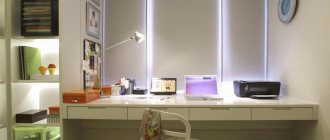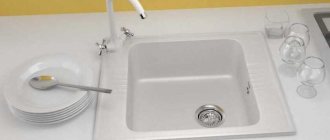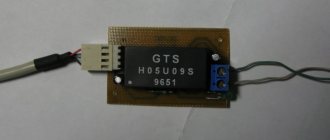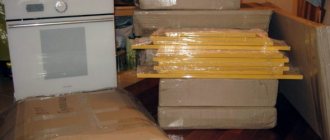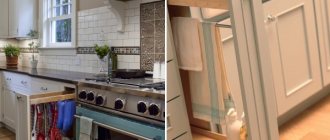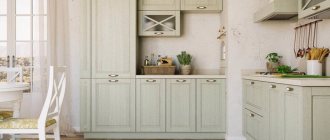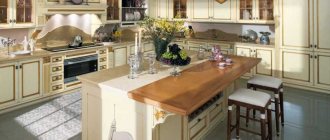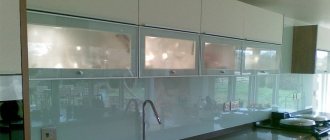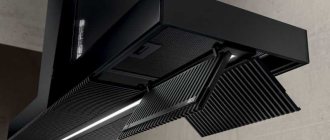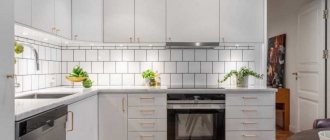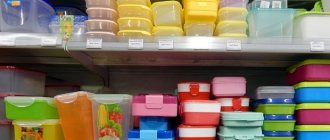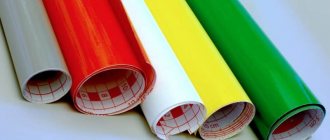What is a light table
A light table is a table coated with epoxy resin and having various types of lighting.
A light table is a table coated with epoxy resin and equipped with additional lighting. It has the following advantages:
- resistance to mechanical damage;
- moisture resistance;
- ease of care;
- sunlight resistance and color retention;
- no shrinkage of the material after pouring;
- ease of decoration, the ability to implement a variety of design solutions and high aesthetic appearance.
Such tables have many advantages.
There are also a number of disadvantages:
- high cost of source material;
- intolerance to low temperatures, from which the material begins to crack;
- with strong heating there is a risk of releasing toxic substances;
- the impossibility of placing hot dishes, which leads to melting of the material.
The high cost of materials for manufacturing is one of the disadvantages of such furniture.
When making it yourself, you must strictly follow the instructions, since any deviation from them can lead to defects.
When making such tables yourself, you must strictly follow the instructions.
What are they?
All luminous epoxy tables can be divided according to the nature of light generation:
- Resin with phosphor. This is a powdery substance that works on the principle of photoluminescence. After exposure to ultraviolet light or bombardment by electrons, this substance releases light energy, that is, it glows after exposure to sunlight.
- Electric lighting. May be in the form of LEDs or incandescent lamps. In this case, the dielectric properties of epoxy resin are used, which can be used to fill the elements of the electrical circuit, thereby reliably insulating them.
The power supply for LED elements is usually completely flooded, along with the backlight. This is due to its low power. In this case, it will no longer be possible to replace a failed element. More durable models are equipped with a current converter.
Tables made of epoxy resin can glow on their own, or can be equipped with additional electric lighting.
Backlight options
This piece of furniture can decorate any interior, turning an ordinary environment into an original, ultra-modern one. To make the table, different lighting options are used, each of which has a number of features:
- LED bulbs. Suitable for large items. The elements provide bright light, the shade is deep and rich. LEDs last much longer than conventional lamps, burn out less often, and have a higher efficiency. The advantage of such lighting devices is the absence of heating, so installation is allowed in any frame. It is possible to choose a suitable color scheme. LEDs are safe and inexpensive.
- LED strips. Such devices are distinguished by their versatility and practicality. They are easy to use and install, and have a high level of reliability. You can equip the table with LED strip not only from the inside, but also from the outside. It is compact and elastic. The devices are environmentally friendly and consume a small amount of energy. The market offers a wide range. The user can independently adjust the color and brightness of the lighting. Tapes are quite expensive and have a limited length.
- Neon lamps, threads. They provide a soft glow that is distributed evenly, with no contrasting shadows. Controllers help regulate the color and intensity of the glow. Warranty service life – 20 years. The shape of the tubes varies. The products do not create noise during operation and do not irritate the eyes.
The gas present inside neon tubes may contain mercury vapor, so the product requires special disposal. Such lamps must be installed by a specialist.
Tunnel lighting can be monochromatic or multi-colored. In this case, the light may blink or fall evenly. The color variety of lamps allows you to choose any option for making a table. Red diodes have the lowest degree of dispersion, so they will be preferable: these lamps make the tunnel deeper.
The design of a carpentry table, tips for making it yourself
It is not always possible to purchase original pieces of furniture in a store at an adequate price, so you can make a table with lighting yourself. The product is multifunctional, since it is used both as a regular coffee table and to create an accent in the interior.
LED bulbs
LED strips
Neon lamps
How to make it yourself
Scheme and drawing
The first step is to decide on the size and shape of the table, which will later be reflected in the drawing.
Before creating a drawing, you need to decide on the shape and dimensions of the table. Here are some recommendations to consider:
- the table must fit optimally into the space of the room for which it is intended;
- you need to estimate the number of people who will use it, and allocate at least 70 cm in width for each;
- the height of the table must exceed 70 cm;
- If you plan to use the table for both a large number of guests and a small family, then you should opt for a folding model.
The height must be more than 70 cm. The table can have different shapes:
- square;
- oval;
- round;
- rectangular;
- uneven.
The shape is determined by the capabilities of the space and the wishes of the owners. It is also worth choosing the number of legs:
- One is massive. Suitable only for small structures, for example, a children's table or a table for a gazebo. In this case, a reliable cross-shaped harness is required to cope with significant loads.
- Two are massive. Must be located at a suitable distance. Most often they are chosen for rectangular or oval models, for example, a country table. Usually the upper part of the legs is narrow, and begins to widen towards the bottom. This design allows you to fit freely at the table without your feet touching the legs.
- Four. The most common option used for dining tables or desks. Also suitable for tables with a complex tabletop configuration. It is very important that the length of the legs is identical, and that their dimensions and length correspond to the overall design.
In most cases, it is most convenient to use four table legs, as they can easily provide sufficient reliability and stability of the structure. At the same time, they do not require specific calculations.
The choice of dimensions depends solely on the size of the space for which the table is being made. For example, for a small kitchen, the size of the countertop can vary from 50x80 cm to 60x120 cm. Most often, the width falls within the range of 80-110 cm, and the height is 70 cm. It is very important to determine the desired dimensions in advance in order to competently draw up a drawing.
The size depends on the space for which the table is being made. The scheme is carried out in several projections, depending on the complexity of the design. This is usually a front, side and top view. It indicates the external dimensions - height, width, as well as the thickness of the parts used. The drawing must include an indication of the distances between the elements, their width, dimensions from the part to the attachment point and the sequence of necessary actions.
Selection of tools and materials
To work you will need the following tools:
- an electric drill, which is used to form holes for cotter pins, as well as to create decorative recesses;
- hammer;
- a grinding machine, with which the surface of the tabletop is brought to a perfectly smooth and even state;
- a set of clamps (fasteners) necessary for the screed;
- a jigsaw, which cuts through the ends of the tabletop;
- a plane, which is used to pre-process wood;
- gas burner necessary for burning cavities in wood;
- accompanying tools – chisel, screwdrivers, saw, construction knife, pencil, tape measure.
Make sure you have all the necessary tools in advance.
If all of these tools are not available, they can be rented from workshops or some hardware stores.
Missing tools, if necessary, can be found and rented in specialized stores. The optimal material for making epoxy products is wood. However, you should not make a glowing table with your own hands from expensive wood like oak. Cypress or pine is ideal.
Cypress or pine is ideal for making your own light table. The following materials will be required:
- four wooden boards measuring 150x14x4 cm;
- two bottles of epoxy resin, 118 ml each;
- metal legs;
- wood glue;
- six plastic cups;
- scotch;
- hardener;
- 100 g phosphor;
- furniture varnish;
- sheet of plastic or plywood measuring 60x150 cm.
In addition to tools, you will need to select a list of necessary materials. Table creation process:
- Connect the boards with cotter pins, then glue them together. Tighten the resulting shield with clamps and leave until the glue dries completely.
- Process the side edges of the tabletop with a plane, then sand.
- Trim the ends of the table with a jigsaw to a single level. Sand them down.
- When using cypress, clean the resin chambers with a semicircular chisel. It is important not to disturb the natural structure.
- Blow out the cavities with a vacuum cleaner and dry with a hairdryer.
- Prepare epoxy filler. To do this, you need to mix the resin, hardener and phosphor in plastic glasses. For 10 g of resin there is 1 g of powder.
Work with resin must be carried out using thick rubber gloves.
- Cover the perimeter of the table with tape and place plywood or a sheet of plastic underneath. This is necessary to prevent resin leakage.
- Fill the cavities and cracks with the prepared filler and leave for a day. This time is enough for the mixture to completely harden.
Filling must be done gradually, starting with filling the cracks. Otherwise, during the drying process, air bubbles will be released from the latter, which will remain in the resin.
- Sand the surface with a sander until a perfectly flat surface is obtained.
- Cover the tabletop with three layers of furniture varnish, allowing each layer to dry completely.
- Form a support frame from a board, the width of which starts from 5 cm.
- Attach the tabletop to the frame and place it on the legs.
If pine (or indeed oak) is used for work, then the recesses in it are burned out using a gas burner. This allows you to create recesses of any shape. In addition, the burnt surface emphasizes the structure of the wood, which adds visual appeal.
Lighting and dimmer
When using a phosphor, brightness adjustment is achieved by changing the amount of this powder. It does not dissolve in the resin, but is distributed throughout its entire volume.
The luminous area should not be made too large. Therefore, you should not make too large an area glow, as it will take much longer to dry. During this time, powder particles may settle to the bottom, which will lead to uneven lighting. It is better to divide the entire surface of the countertop into small zones.
You should not make this backlight too bright, as it can cause rapid eye fatigue.
If you use LED strip, then when laying it it is important to hide the light sources. To do this, recesses are made in the tabletop, to the horizontal walls of which the tape is attached. In this case, the resin itself should be tinted to disguise the LEDs.
DIY tabletop with LED lighting
Recently, tables with a tabletop with a natural texture, complemented with epoxy resin, which looks like a living river, have become very popular. In this master class, using similar principles and techniques, we will make an unusual tabletop with lighting and an interesting pattern. This would look good in the room of a teenager or car enthusiast. Also, using the above principles, you can create your own unique countertop design.
Materials
To make a tabletop with LED lighting you will need to prepare:
- boards;
- small wooden planks made of pine;
- jigsaw;
- epoxy resin;
- LED controller and power supply for it;
- LED strip;
- wax for wood processing;
- marker or paint for wood;
- tracing paper;
- stain or varnish;
- clamps;
- elastic bands;
- grinding machine;
- carpentry glue.
Step 1
. A significant part of the work that lies ahead of you is creating a design that you will reproduce on your tabletop. You can draw a sketch either manually on a natural scale to make it easier for you to work, or in graphic programs if you have sufficient skills. You can draw the picture either completely yourself or transform it into a schematic drawing. When working with it on a PC, a ready-made template will need to be printed.
Attention! Mark in advance on the drawing the places where the backlight will be located. Mark them in some special way to avoid confusion.
Step 2
. In this case, the tabletop was assembled from scratch. You can repeat this technique or modify the old countertop by removing all the top coating in advance.
Attention! You will need two countertops. The bottom one will not be visible, and the backlight will be attached to it.
The boards for the tabletop must be firmly glued together. To do this, place them on a flat surface, secure them with clamps and weights, having previously lubricated the fastening points with wood glue. Use an elastic band as an additional fixation.
Related article: Original short pullover knitted
Step 3
. Once the tabletop is ready, you can begin transferring the design. Pay attention to the places where the lighting will be located. You will need to make them end-to-end.
Here you can use hand tools, but this work will be very long, or professional tools if you have sufficient skills to work with them.
Step 4
. Now you will need to prepare the backlight yourself. To do this, create a wooden support from small pieces of hardwood. It should be slightly larger than the already prepared holes. You will attach this element from the side of the lower tabletop, but so that it matches the pattern of the upper one. The tape itself must be attached to the inner side walls.
First, fold everything and lay it out on the table. Adjust the length of the tape and check its functionality. At this point, set everything aside.
Step 5
. Now you will need to fill the prepared hole with epoxy resin. To do this, place the narrow tabletop on any convenient flat surface covered with thick film. After diluting the resin in the proportions specified in the instructions, pour it into the holes so that the resin is level with the surface of the countertop. Leave everything until the material is completely dry.
Step 6
. When this happens, remove the film and thoroughly sand the countertop with a sander. You can also do this with sandpaper, but the process will take much longer.
Step 7
. Attach the prepared LED structure and power supply to the lower tabletop.
Step 8
. Attach the previously printed template to the tabletop so that the cutouts match the cutouts in the picture. Use a pencil to transfer the rest of the image onto the tabletop.
Step 9
. Afterwards you can use a special marker or wood paint. Finish the drawing with them and let it dry thoroughly.
Step 10
. At the final stage, you will need to wax and thoroughly polish the surface of the countertop. If you want to get an interesting tone, use stain or varnish instead of wax. Which material to choose depends only on your taste and your vision of the finished piece of furniture.
Related article: DIY foam products for interior decoration
After the topcoat has dried, the tabletop is ready.
Features of children's light table
There is a special type of luminous tables - a children's light table for drawing with sand.
Light tables for sand painting have become popular recently. This is not just a beautiful element of the interior, but a full-fledged training system that allows you to develop:
- sensory abilities;
- fantasy;
- fine motor skills;
- compositional skills;
- artistic and aesthetic taste.
It is made without the use of epoxy resin. The simplest option is a plastic container lined with foil and filled with a garland or LED lantern.
A glowing table for the nursery can be made using ordinary light garlands. The inside of the lid is covered with tracing paper. The assembled structure is provided with sides and filled with kinetic or quartz sand.
Rules of care
Epoxy tables do not require special maintenance. If they become dirty, they can be wiped with a dry and soft cloth. It is better to remove liquids and dirt from the surface immediately to avoid the appearance of streaks or stains. Do not wipe the countertop with substances containing acetone or alcohol, as they destroy the material.
The table should be kept clean and protected from scratches. In general, caring for a luminous table is no different from caring for a regular tabletop. It is worth keeping it clean and preventing chips and scratches, as they will be visible against a transparent background. If handled with care, the table can last for several decades.
Making a glowing table with your own hands is not a very difficult task that requires a careful approach. If you carefully follow the instructions, you can get a high-quality, beautiful and original product.
Preparing to start work
To make a coffee table with a mirror, you need to prepare the necessary tools and materials. The master will need:
- boards - wood or chipboard;
- sandpaper - it is needed for processing the boards after cutting them (if the material is purchased cut into suitable elements, then there is no need to use sandpaper);
- an ordinary mirror - for a coffee table with a diameter of about 60-70 cm;
- translucent mirror - its width should be approximately 10 cm larger than the width of a regular mirror (the additional size is needed so that the glass can be glued to the strips with LEDs); in the absence of a translucent mirror, you can use glass on which a mirror film is glued;
- power supply with USB output;
- self-adhesive LED strip no less than 1.5–2 m long;
- wires;
- USB for powering the microcontroller;
- microcontroller and programmer for it;
- self-tapping screws;
- Super glue;
- screwdriver
Some craftsmen prefer to make a table with their own hands using a New Year's garland instead of an LED strip. In this case, there is no need to purchase equipment that is equipped with designs with LED strips (microcontroller, USB).
